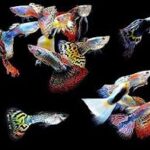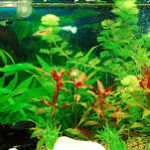The Historical Significance of Brown Hair and Green Eyes
Ancient Perceptions of Brown Hair and Green Eyes
Throughout history, hair and eye color have held cultural, social, and even mystical significance. Brown hair, being one of the most common natural hair colors, has often been associated with earthiness, reliability, and humility. In ancient civilizations such as Egypt and Greece, brown hair was seen as practical and unassuming, contrasting with the rarity of lighter shades. Meanwhile, green eyes were considered extraordinarily rare and mysterious, often linked to deities, magic, or supernatural traits.
In Norse mythology, for example, green-eyed individuals were sometimes thought to possess otherworldly powers. Similarly, ancient Romans viewed green eyes as exotic, often associating them with beauty and allure. Brown hair, on the other hand, was so common that it rarely carried the same mystique—instead, it was seen as a sign of stability and strength.
Medieval and Renaissance Interpretations
During the Middle Ages, perceptions of brown hair and green eyes shifted. Brown hair remained prevalent, but its symbolism varied by region. In some European cultures, it was linked to peasants and laborers, while in others, it was simply the norm. Green eyes, however, continued to be a rarity, often associated with witchcraft or enchantment. Many believed that green-eyed individuals had the “evil eye,” capable of cursing others with a mere glance.
By the Renaissance, art and literature began to romanticize certain physical traits. Paintings from this era frequently depicted women with fair skin and light hair as the ideal of beauty, but green eyes were sometimes highlighted as a mark of uniqueness. Brown hair, though common, was often overshadowed by the growing preference for blonde and red hues among European nobility.
The Influence of Folklore and Superstition
Folklore from various cultures reinforced the mystique of green eyes. Celtic legends, for instance, often described faeries and mystical beings with emerald-green eyes, further enhancing their enigmatic reputation. Brown hair, while not as heavily mythologized, was sometimes tied to themes of loyalty and resilience in folk tales.
Superstitions surrounding eye color persisted well into the early modern period. In some cultures, green-eyed people were believed to have fiery tempers or seductive powers, while brown-haired individuals were seen as dependable but unremarkable. These perceptions would later evolve as scientific understanding of genetics improved, but the cultural fascination with rare traits like green eyes remained strong.
The historical significance of brown hair and green eyes reveals how societal values shape perceptions of beauty. While brown hair was often overlooked due to its commonality, green eyes were consistently regarded with awe and suspicion. These early attitudes laid the foundation for future trends, influencing how these traits would be viewed in later centuries.
The Shift in Beauty Standards During the 18th and 19th Centuries
The Rise of Romanticism and Changing Ideals
The 18th and 19th centuries marked a dramatic shift in beauty standards, influenced by art, literature, and social movements. Romanticism, in particular, emphasized emotion and natural beauty, leading to a renewed appreciation for unique features. Green eyes, already rare, became a symbol of depth and passion in poetry and paintings. Brown hair, meanwhile, was often portrayed as warm and nurturing, especially in contrast to the pale, delicate aesthetic favored among European elites.
Portraits from this era frequently depicted women with dark brown hair as virtuous and maternal, while green eyes were highlighted as striking and enigmatic. The contrast between the two traits—one common, one rare—created an interesting dynamic in beauty standards.
The Impact of Colonialism and Global Exchange
As European powers expanded their influence worldwide, exposure to different ethnicities and features diversified beauty ideals. In some colonies, lighter features (including blonde hair and blue eyes) were unfairly elevated as superior, but brown hair remained a dominant trait among many populations. Green eyes, still uncommon, were sometimes exoticized in colonial literature, reinforcing their association with mystery.
Meanwhile, in places like Ireland and Scotland, where green eyes were more prevalent due to genetic factors, they became a point of cultural pride. Brown hair, being widespread, was less remarked upon but still considered a natural and wholesome trait.
Fashion and the Victorian Era’s Influence
The Victorian era (1837–1901) brought strict beauty norms, with an emphasis on modesty and refinement. Pale skin was prized, and women often wore hats or bonnets to protect their complexions. Hair color played a role in social perception—brown hair was seen as respectable, while very dark or very light shades were sometimes viewed with suspicion.
Green eyes gained a reputation for being alluring yet dangerous. Victorian novels often described femme fatales with green eyes, suggesting a seductive but untrustworthy nature. Brown-haired women, in contrast, were frequently cast as dependable and kind, reinforcing traditional gender roles.
The 18th and 19th centuries solidified many of the beauty standards that persist today. Green eyes maintained their mystique, while brown hair was seen as a stable, if unremarkable, trait. The interplay between rarity and commonality shaped how these features were perceived, setting the stage for further evolution in the modern era.
The 20th Century – Hollywood, Media, and Changing Perceptions
The Golden Age of Hollywood and Beauty Ideals
The 20th century saw a dramatic shift in how brown hair and green eyes were perceived, largely due to the influence of film and media. Hollywood played a pivotal role in shaping beauty standards, and actors with striking features became cultural icons. Green eyes, already rare, gained a new level of glamour when stars like Elizabeth Taylor captivated audiences with their vivid emerald gaze.
Brown hair, while common, was also celebrated in Hollywood. Actresses like Audrey Hepburn and Sophia Loren showcased how deep brunette shades could exude elegance and sophistication. Unlike earlier centuries, when blonde hair was often idealized, the mid-20th century saw a surge in appreciation for darker hair tones, especially when paired with expressive eyes.
The Role of Fashion and Cosmetics
As beauty trends evolved, cosmetics companies began marketing products to enhance natural features. Mascara and eyeshadow were used to make green eyes appear even more striking, while hair dyes allowed women to experiment with different shades of brown—from chestnut to espresso. The 1960s and 70s embraced natural beauty, and brown hair was often seen as effortlessly chic.
Green eyes, however, remained a coveted trait. Advertisements frequently highlighted eye colors, suggesting that certain makeup shades could make green eyes “pop.” This marketing reinforced the idea that green eyes were special and desirable, further elevating their status in popular culture.
Cultural Movements and the Rejection of Traditional Standards
The latter half of the 20th century saw a rebellion against rigid beauty norms. The feminist movement encouraged women to embrace their natural appearance, leading to greater acceptance of diverse traits. Brown hair, which had sometimes been dismissed as plain, was now celebrated for its versatility and richness.
Green eyes, meanwhile, continued to be romanticized in music, film, and literature. Songs like “Green Eyes” by Coldplay and references in poetry kept the fascination alive. Unlike in past centuries, when green eyes were sometimes feared, they were now universally admired as a mark of beauty.
The 20th century transformed the perception of brown hair and green eyes, thanks to media influence and changing cultural attitudes. Hollywood glamorized these traits, while fashion and cosmetics industries capitalized on their appeal. By the end of the century, both brown hair and green eyes were firmly established as symbols of beauty—one for its classic elegance, the other for its captivating rarity.
The 21st Century – Diversity, Social Media, and Modern Beauty Trends
The Digital Age and the Redefinition of Beauty
The 21st century has brought unprecedented changes to beauty standards, largely driven by social media and global connectivity. Unlike past eras, where trends were dictated by a narrow elite, today’s ideals are shaped by a diverse range of influencers, celebrities, and everyday people. Brown hair remains one of the most common hair colors worldwide, but it is no longer seen as “ordinary”—instead, its versatility is celebrated across countless shades, from warm caramel to cool ash brown.
Green eyes, still relatively rare (appearing in only about 2% of the global population), have gained even more mystique in the digital era. Platforms like Instagram and TikTok allow individuals to showcase their unique features, and green-eyed creators often attract attention for their striking gaze. Filters and editing tools can even simulate green eyes, demonstrating how coveted the trait has become.
The Influence of Celebrity Culture and Representation
Modern celebrities have played a significant role in keeping brown hair and green eyes in the spotlight. Actors like Emma Stone and Kit Harington have made green eyes a talking point, while brunette stars like Zendaya and Henry Cavill prove that brown hair can be just as glamorous as any other color. The entertainment industry now embraces a wider range of beauty standards, moving away from the rigid preferences of previous decades.
Additionally, the rise of representation in media means that people of all ethnicities are redefining what brown hair and green eyes can look like. Mixed-race individuals with unique combinations of features—such as brown hair with green eyes—are increasingly visible, challenging old stereotypes and broadening the definition of beauty.
The Role of Science and Cosmetic Enhancements
Advances in cosmetic technology have given people more control over their appearance than ever before. Colored contact lenses allow individuals to experiment with green eyes, even if they weren’t born with them. Hair dye technology has also improved, offering natural-looking brown shades that can be customized to suit any skin tone.
Interestingly, genetic research has deepened our understanding of these traits. Studies show that green eyes are the result of low melanin levels combined with light scattering in the iris, while brown hair is linked to higher eumelanin production. This scientific insight hasn’t diminished their appeal—if anything, it has added to the fascination, as people appreciate the biological rarity of green eyes and the genetic dominance of brown hair.
The Future of Brown Hair and Green Eyes in Beauty Trends
As society continues to move toward inclusivity, the popularity of brown hair and green eyes is unlikely to fade. Brown hair’s adaptability ensures it remains a staple, while green eyes will always hold allure due to their scarcity. The next decade may see even more appreciation for natural beauty, with less pressure to conform to a single ideal.
Social media will likely continue amplifying unique features, making green eyes a perpetual topic of admiration. Meanwhile, brown hair—whether natural or styled—will remain a timeless choice, adaptable to every trend. The evolution of these traits reflects broader cultural shifts, proving that beauty standards are never static, but always evolving.
Final Conclusion
From ancient myths to modern selfies, brown hair and green eyes have journeyed through centuries of changing perceptions. Once seen as either too common or too strange, they are now celebrated for their natural beauty and versatility. The 21st century, with its embrace of diversity and technology, has solidified their place in the pantheon of desirable traits. Whether through genetics or cosmetic enhancement, these features continue to captivate—proving that beauty is not just about rarity or commonality, but about how we choose to celebrate it.










